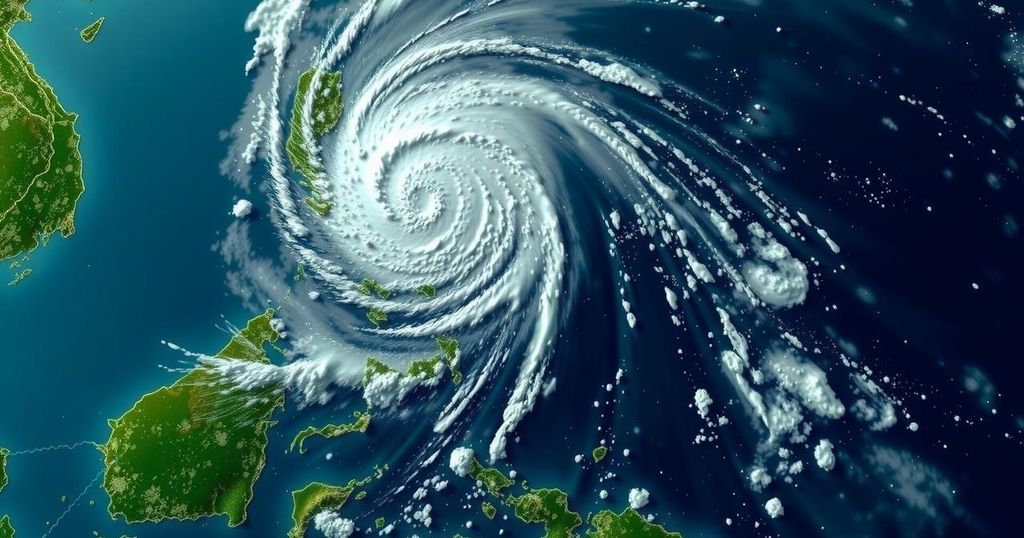Typhoon Usagi Forecasted to Cause Severe Weather in Northern Philippines
Typhoon Usagi, classified as a Category 4 hurricane, is projected to bring devastating flooding and landslides to the Philippines’ north. It is the fifth major storm in just three weeks, following several deadly storms. This unprecedented occurrence of multiple tropical storms in November raises concerns regarding climate patterns in the region.
On Thursday, Typhoon Usagi, known locally as Ofel, approached the northern regions of the Philippines with winds akin to those of a Category 4 hurricane. Meteorologists forecast significant rainfall, raising concerns of severe flooding and landslides. This storm marks the fifth major cyclone to strike the Philippines in a mere three weeks, following four previous storms—Toraji, Trami, Yinxing, and Kong-rey—that collectively resulted in over 100 fatalities and widespread devastation. The simultaneous occurrence of four tropical storms in the South China Sea and North Pacific is unprecedented for November, highlighting an alarming trend in weather patterns in the region.
Typhoon Usagi is part of a troubling escalation of storm activity in the Philippines, indicating an increase in both frequency and intensity of typhoons experienced by the nation. This recent bout of severe weather comes on the heels of a record-breaking number of simultaneous storms, which researchers attribute to climatic changes affecting atmospheric conditions. The Philippine government and meteorological services are on high alert, deploying resources to mitigate potential damage and ensure public safety amid this severe weather threat.
In summary, Typhoon Usagi poses a significant threat to the Philippines, particularly in the north where the potential for flooding and landslides exists. The country’s recent experience with multiple storms underscores the urgent need for robust disaster preparedness and response strategies to protect vulnerable populations. The occurrence of back-to-back storms highlights a concerning pattern that may be tied to broader climatic changes, prompting discussions about long-term environmental strategies.
Original Source: www.nytimes.com




Post Comment